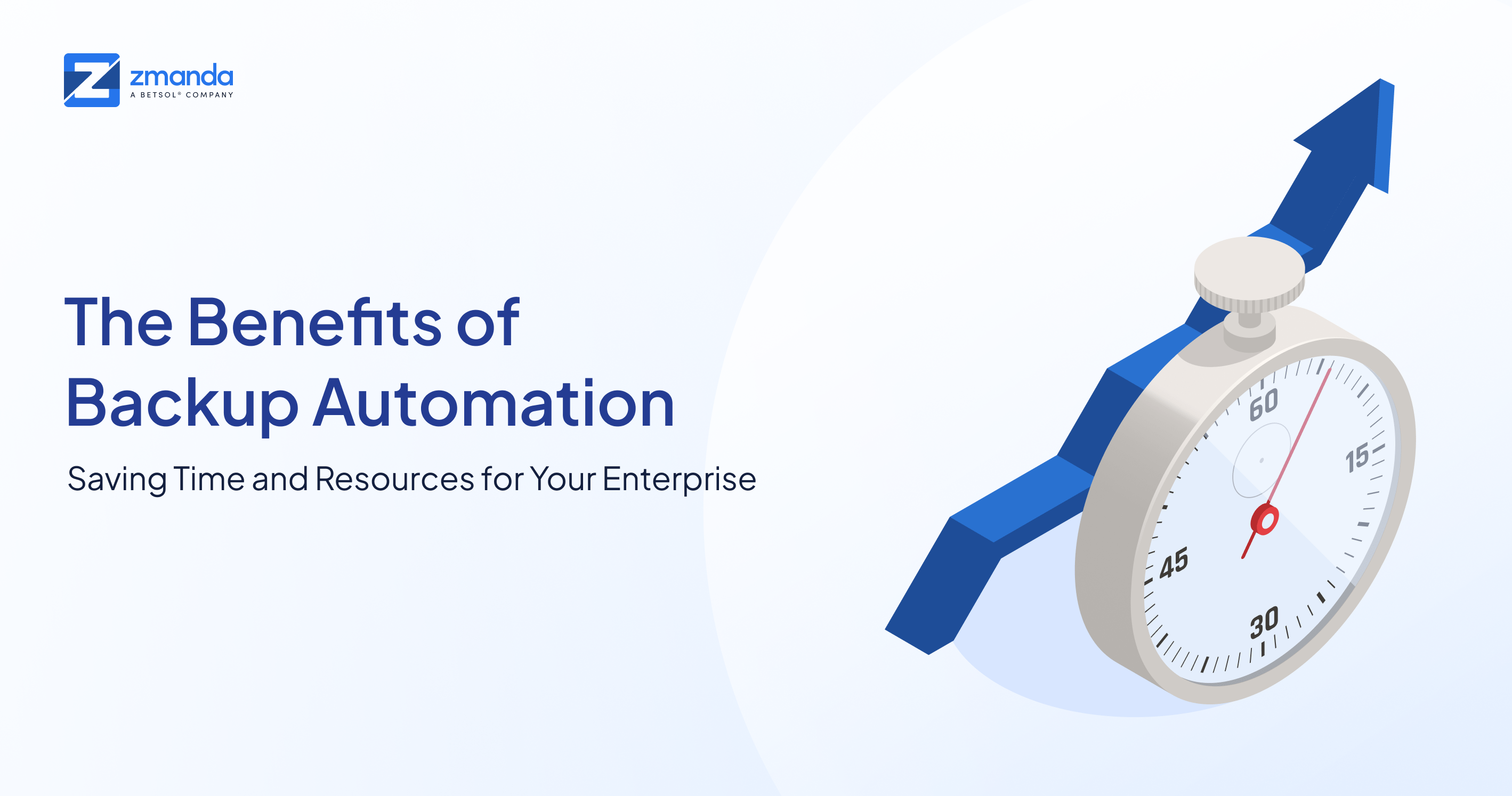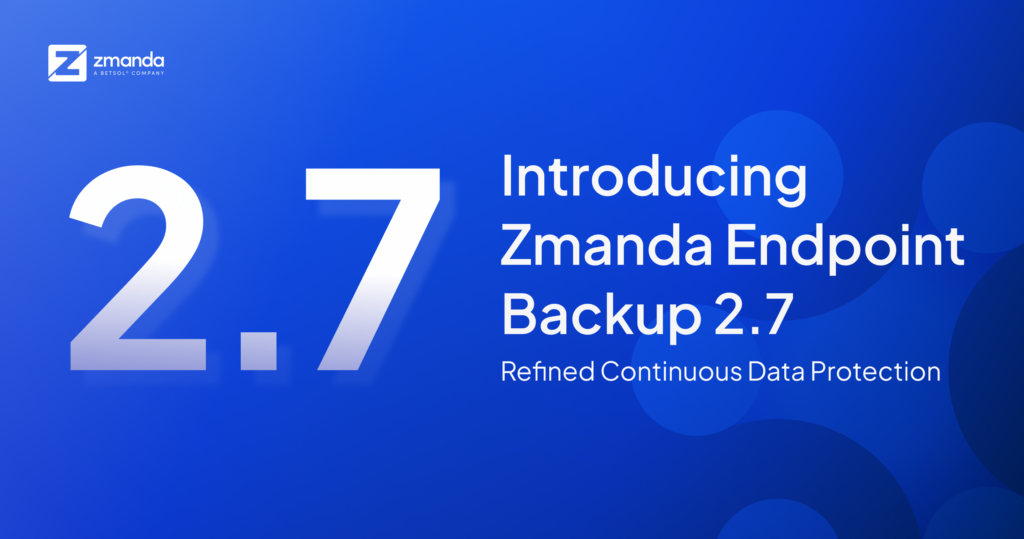
Enterprises generate vast amounts of data every day, making effective backup solutions essential for maintaining business continuity. In addition, implementing reliable backups can also help minimize data loss in the event of unexpected disasters, hardware failures, or cyberattacks.
Traditionally, backup processes have been carried out manually, involving complex procedures that require significant time and effort. These manual backups are prone to errors, inconsistencies, and data loss. Additionally, manual backups can be expensive and require a lot of resources, making them impractical for enterprises dealing with large volumes of data.
Fortunately, backup automation has emerged as a solution to these challenges. Backup automation is accomplished through the use of specialized software tools and scripts. This enables the automation of backup tasks, including scheduling backups and monitoring backup status. Furthermore, it is designed to ensure the integrity and consistency of the backed-up data, adding a layer of security to your backup solution. With backup automation, enterprises can automate their backup processes, freeing up resources and reducing the risk of errors and data loss.
How does an automated backup system work?
According to an IBM study, the average total cost of a ransomware breach is $4.62 million. That’s why companies back up critical data to create a safety net to restore systems in the event of ransomware or other similar cyberattacks. There are three types of automated backups, and understanding how they work will help you refine your backup and recovery strategy.
Full Backup
A full backup is the easiest and most complete backup method, in which all data is kept in one version and moved to a storage device.
Incremental Backup
Create a backup of all files that have changed since the last backup. This can be the most recent full backup in the chain or the last incremental backup.
Differential Backup
Differential backups are between full and incremental backups. It includes backing up files, folders, and hard drives that were created or modified since the last full backup (as opposed to only the changes made since the last incremental backup).
Why use automated backups?
With automated backups, you get the following benefits:
Planning: Automated scheduling to complete the required tasks without interfering with production (both on the host and the network) helps optimize processes.
Prevent data loss granularly: By using automation to regularly back up digital assets in line with RPO needs, organizations reduce the chance of losing files and data in use.
Shorter RPOs: Frequent backups lower an organization’s Recovery Point Objectives (RPOs) by reducing the amount of data lost in the event of an incident.
In addition, modern solutions that automate the creation of synthetic full backups will also help reduce the target recovery time by automatically creating a “full backup” in the incremental backup chain. This reduces the number of dependent backups in the chain and reduces the overall restore time.
Backup and DR Testing: Automatic validation of backups for applications and services verify that the backup will function properly during restoration. This provides evidence and reliability of recoverability and frees staff from more time-consuming manual testing processes.
Here Are Some of the Benefits of Backup Automation
Improved Data Security
With backup automation, backups are performed automatically and on a regular schedule, which can improve data security by reducing the risk of human error. This ensures that data is consistently backed up, and there is a higher chance of being able to recover lost data in the event of an unexpected event. Backup automation also eliminates the need for manual backups. Manually backing up data is a time-consuming process that requires a significant amount of effort and can be prone to errors. Hence, you can set up a regular schedule for backups to occur automatically, eliminating the need for manual intervention and reducing the likelihood of missed backups or gaps in data protection.
Time and Cost Savings
Backup automation can save time and reduce costs compared to manual backups. The backup process can also be completed faster than manual backups. This is because the process is streamlined and can be completed in a shorter amount of time. This not only reduces the amount of time IT staff needs to spend on backup tasks but also ensures that backups are completed more quickly, reducing the amount of time that critical business data is left unprotected.
Simplified Recovery Process
Backup automation can help simplify and speed up the data recovery process in the event of an unexpected event like a cyberattack, hardware failure, or natural disaster. It is designed to make the data recovery process as straightforward as possible. IT staff can quickly locate the backup files, and the software will guide them through the process of restoring the data. This can significantly reduce the time required to recover data, which in turn can help reduce downtime and minimize the impact on business operations.
Saving Time and Resources for Your Enterprise with Zmanda
In short, the market for data backup and recovery will grow in the next few years, thanks to trends like the growing use of cloud-based solutions and the adoption of artificial intelligence and machine learning technologies. Implementing backup automation doesn’t have to be complicated. With the right backup solution, such as Zmanda, enterprises can easily automate their backup processes, customize their backup schedules, and monitor their backup status.
Zmanda has been a trusted backup solution provider since 1991, providing cost-effective backup solutions for multiple platforms. With Zmanda, enterprises can save time and resources by automating their backup tasks, ensuring that their critical data is always backed up and readily available for restoration.
In 2023, organizations will spend on automated storage and backup security validation, reporting, and compliance evidence generation. This is because there will be more pressure to improve security and increase compliance efforts. Consider exploring Zmanda as a potential solution for your backup needs. Reach out to our Solution Architects or get a free trial to become acquainted with it.


